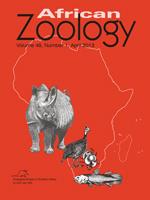The presence of humans and man-made structures may cause increased wariness in wildlife, causing displacement from traditional habitat ranges. Potential species differences in such responses could affect the composition of wildlife communities around human settlements. We examined the position of ungulate groups relative to man-made infrastructure in the area surrounding Amboseli National Park, Kenya. We analysed the effect of vegetation structure, species differences, and group size on the distance that groups of ungulates were found from man-made structures. There were interspecific differences in these distances and much of this interspecific variation could be explained by body size, with larger species tending to be found further away from manmade structures. In contrast, we found no evidence of an effect of group size or vegetation structure on the distance that ungulates were seen from man-made structures. These results lend further evidence that size influences sensitivity to the presence of human disturbance, and that management strategies may need to tailor to the range requirements of larger species.
How to translate text using browser tools
1 April 2013
Interspecific Variation in the Distribution of Ungulates Relative to Human Infrastructure Surrounding Amboseli National Park
Marian Howe,
Moses M. Okello,
Jeremy M. Davis
ACCESS THE FULL ARTICLE

African Zoology
Vol. 48 • No. 1
April 2013
Vol. 48 • No. 1
April 2013
behaviour
Comparative methods
conservation
human disturbance
size
species differences




